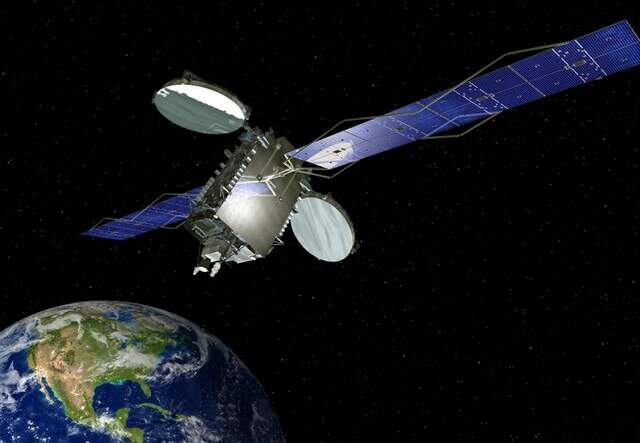The Department of Defense wants physical access to its satellites in geostationary orbit, and it’s not hard to understand why.
Satellites are valuable due to their unique location — hundreds to tens of thousands of miles above the Earth — where they can produce unique imagery of the surface or extend communications to far-flung locales. But that unique vantage also puts limits on orbiting satellites.
Because they are largely inaccessible, operators can’t switch out broken or outdated hardware, and they can’t even refuel them. Whatever hardware and fuel is on a satellite at launch is all it’s got for its entire life span.
But what if there was a service dedicated to efforts in space that allows the military to access, repair and tow its on-orbit satellites?
That’s what the Defense Innovation Unit wants. The Pentagon technology hub has issued a solicitation for a low-cost logistics service that can provide physical access to military satellites all the way from low-Earth orbit to geostationary orbit, or even cislunar orbit.
RELATED

Specifically, DIU wants multi-orbit logistics vehicles capable of ferrying payloads between satellites in completely different orbits, acting as on-orbit fuel depots, or transferring space vehicles to new orbits. Here are the different commercial services and vehicle types for which DIU is looking:
- Light utility m-OLV: capable of transporting (hosting) one or more mechanically coupled payloads (about 50-kilogram payload capacity). The vehicle should have sufficient propellant capacity to transport one payload from low-Earth orbit to geostationary orbit with guidance and control to support cooperative rendezvous, proximity operations and release of its payload at the end of the transit.
- Heavy utility m-OLV: capable of transporting (hosting) one or more mechanically coupled payloads or spacecraft (500-plus-kilogram payload capacity). Sufficient propellant for persistent operations and maneuver to another orbit. The vehicle should include guidance and control to support cooperative rendezvous, proximity operations, and berthing with a space outpost or servicer.
- Fuel depot: capable of storing and transferring sufficient chemical and/or electrical propellant to a m-OLV or self-propelled satellite to achieve a transfer from low-Earth orbit to geostationary orbit. The depot should include the necessary mechanisms, sensors and controls to couple the customer vehicle to the depot for refueling.
- Ride-sharing approach: provide transport of detachable payloads or propellant to an m-OLV or an outpost in geostationary, cislunar or another exotic orbit.
The timing of the solicitation is interesting. SpaceLogistics, a Northrop Grumman subsidiary, is expected to provide the first commercial instance of on-orbit satellite servicing this month. The company’s Mission Extension Vehicle-01 is expected to dock with an Intelsat communications satellite and then use its own propulsion system to move the Intelsat satellite to a new orbit.
MEV-01’s mission is to extend the life of on-orbit satellites that are low on fuel by acting as a replacement propulsion system. But SpaceLogistics plans for future vehicles to be able to complete more complex missions, such as using mechanical arms to conduct repairs, or to replace an on-orbit payload with a new, more advanced model delivered from Earth.
The Space Enterprise Consortium has issued a contract to SpaceLogistics to look into servicing four national security satellites.
Of course, SpaceLogistics isn’t the only entity pursuing on-orbit maintenance and transport services. Astroscale is building space vehicles that can secure and de-orbit space debris such as defunct satellites, while the Defense Advanced Research Projects Agency is developing robotic arms capable of performing maintenance on satellites in geostationary orbit.
NASA is also trying to build capabilities in this area, awarding a $142 million contract to Maxar last month for robotic arms to perform in-space assembly.
DIU plans to acquire a commercial service through a multi-phased effort, starting with a systems engineering study before moving on to demonstrations of on-orbit capabilities. A prototype should be ready for flight within 36 months of contract award.
Responses are due Feb. 16. More information can be found on the DIU’s open solicitations page.
Nathan Strout covers space, unmanned and intelligence systems for C4ISRNET.








